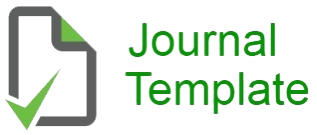ECONOMIC INEQUALITY IN BORDER AREAS
Keywords:
Economic inequality, border areas.Abstract
The border areas of a country have strategic value to support national economic growth. This border region can serve as a point of entry for commerce and economic endeavors with adjacent nations. This has an impact on economic growth in border areas. Economic inequality is a condition where there are significant differences in the distribution of income, wealth and economic opportunities in society. Economic inequality can be the root of many social and economic problems, including poverty, unemployment, and social instability. One of the main causes of economic inequality is injustice in economic opportunities. The method used in this article is to use a literature study which contains theories related to the problem being studied. This research discusses the factors that cause economic inequality in border areas, the impact of economic inequality on people in border areas, and strategies for reducing economic inequality in border areas.
References
Abigail G, Adeyonu, Balogun Olubunmi L, Amao Ifeoluwapo O, and Agboola Timothy O. 2022. "Does farmers' entrepreneurial competencies explain their household poverty status? Evidence from rural areas of Kwara State, Nigeria." Cogent Economics & Finance Vol 10 No 1 pp 1-16
Adam, R.H., & Tiffin, R. 2019. Ketimpangan di pedesaan Indonesia. Buletin Ilmu Ekonomi Indonesia, 55(2), 167-192.
Adeyonu, Abigail G, Olubunmi L Balogun, Ifeoluwapo O Amao, and Timothy O Agboola. 2022. "Does farmers' entrepreneurial competencies explain their household poverty status ? Evidence from rural areas of Kwara State, Nigeria." Cogent economics & finance Vol 10 pp 1- 16
Aginta, Harry, Debby A Soraya, and Wahyu B Santoso. 2018. Financial Development and Income Inequality in Indonesia: A Sub-National Level Analysis. Economics and Finance in Indonesia, Vol. 64, No. 2.
Ali, Mohammad Mahbubi, Abrista Devi, and Hamzah Bustomi. 2020. Determinants of Financial Exclusion In Indonesia. Journal of Islamic Monetary Economics and Finance, Vol. 6, No. 2.
Bajar, S., & Rajeev, M. 2016. The impact of infrastructure provisioning on inequality in India: Does the level of development matter? Journal of Comparative Asian Development, 15(1), 122–155.
Bano, R. P.2019. Analisis Tingkat Ketimpangan Dan Karakteristik Sosial Ekonomi Penduduk. JURNAL ILMU EKONOMI & SOSIAL, 10(2), 46–58.
Charlery, L. C., Qaim, M., & Smith-Hall, C. 2016. Impact of infrastructure on rural household income and inequality in Nepal. Journal of Development Effectiveness, 8(2), 266–286.
Chotia, V., & Rao, N. V. 2017. Investigating the interlinkages between infrastructure development, poverty and rural-urban income inequality: Evidence from Brics Nations. Studies in Economics and Finance, 34(4), 466–484.
Ishak, J. F., Alamanda, A. R., & Kusumah, R. W. R. 2018. The Effect of Capital Expenditure and Investment on Income Inequality,. The Accounting Journal of Binaniaga, 3(1), 51–58.
J. Holmgren, A. Merkel . 2017. Much ado about nothing? e A meta-analysis of the relationship between infrastructure and economic growth . Research in Transportation Economics, hal 1 – 13.
Kodongo, O., Ojah, K. 2016 . Does infrastructure really explain economic growth in Sub-Saharan Africa?. Review of Development Finance, hal 1 – 21.
Luthfiyah, U., & Tallo, A. J. 2020. Analisis Ketimpangan Ekonomi Provinsi Bali Tahun 2019. Aksara: Jurnal Ilmu Pendidikan Nonformal, 6(3), 241-248.
Madhu Sehrawat, A. K. G. 2016. Panel data analysis of financial development, economic growth and rural-urban income inequality: Evidence from SAARC countries. International Journal of Social Economics, 43(10), 998–1015.
Muslimah, H., & Putri, D. Z. 2021. Pengaruh Aglomerasi, Kualitas Sumber Daya Manusia (SDM), Ketimpangan Pendidikan, dan Pertumbuhan Ekonomi Terhadap Ketimpangan Pendapatan di Indonesia. Jurnal Kajian Ekonomi Dan Pembangunan, 3(3), 9.
Ng, C. P., Law, T. H., Wong, S. V., & Kulanthayan, S. 2017. Relative improvements in road mobility as compared to improvements in road accessibility and economic growth: A cross-country analysis. Transport Policy, 60, hal 24–33.
Pare, G., Trudel, M. C., Jaana,M. dan Kitsiou, S., 2015. Synthesizing Information Systems Knowledge: A Typology of Literature Reviews. Information & Management, 52, 183-199
Randa, N. A., & Sentosa, S. U. 2020. Analisis Kausalitas Antara Ketimpangan Pendidikan, Ketimpangan Pendapatan dan Kemiskinan di Indonesia. Jurnal Kajian Ekonomi Dan Pembangunan, 2(1), 37.
Suhartono. 2015. Ketimpangan dan Pembangunan Ekonomi Kabupaten/Kota di Daerah Hasil Pemekaran: Studi Kasus di Provinsi Banten dan Gorontalo, JEKP Vol. 6 No. 1,
Vivi Alatas. 2017. Mengatasi Ketimpangan di Indonesia, Menuju Ketangguhan Ekonomi: Sumbangsaran 100 Ekonom Indonesia. Jakarta: PT Kompas Media Nusantara
Wicaksono E, Amir H, and Nugroho A. 2017. The Sources of Income Inequality in Indonesia: a Regression-Based Inequality Decomposition. ADBI Working Paper Series.
Williamson, J. G. 1965. Regional inequality and the process of national development: A description of the patterns. Economic Development and Cultural Change, 13(4), 1–84.
Downloads
Published
Issue
Section
License
Copyright (c) 2024 INTERNATIONAL JOURNAL OF ECONOMIC LITERATURE

This work is licensed under a Creative Commons Attribution-NonCommercial-ShareAlike 4.0 International License.
INTERNATIONAL JOURNAL OF ECONOMIC LITERATURE © 2023 by Adisam Publisher is licensed under CC BY-SA 4.0







